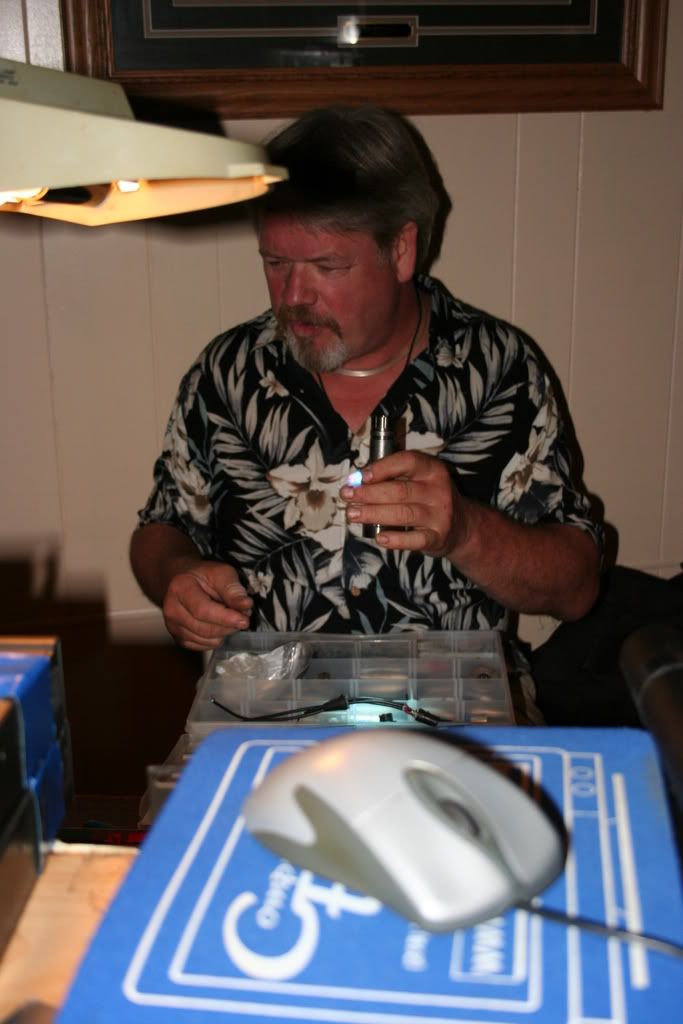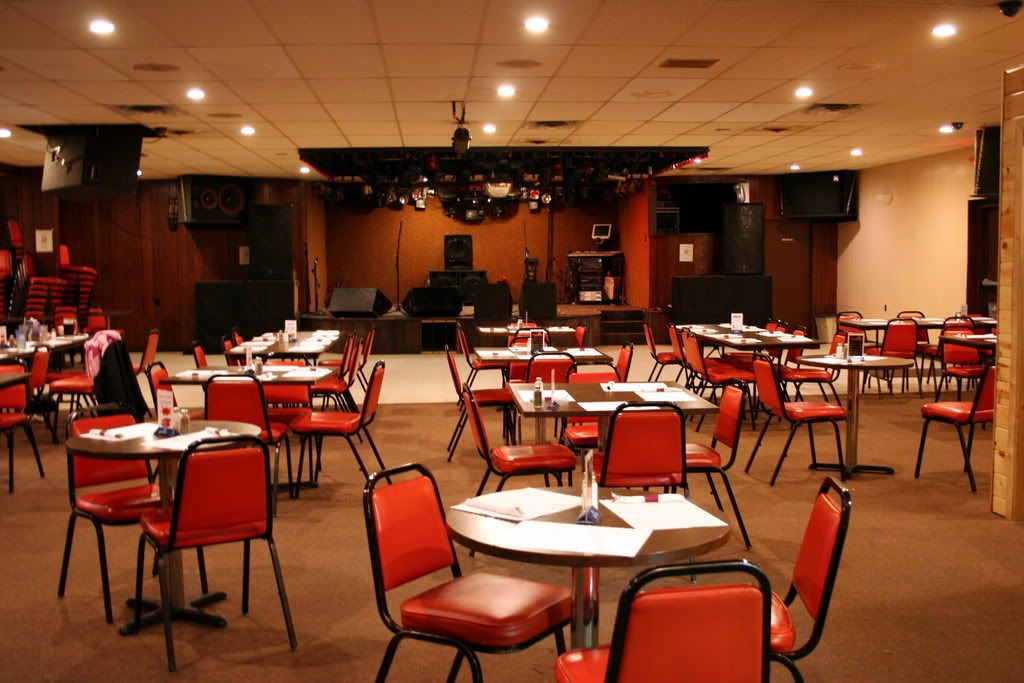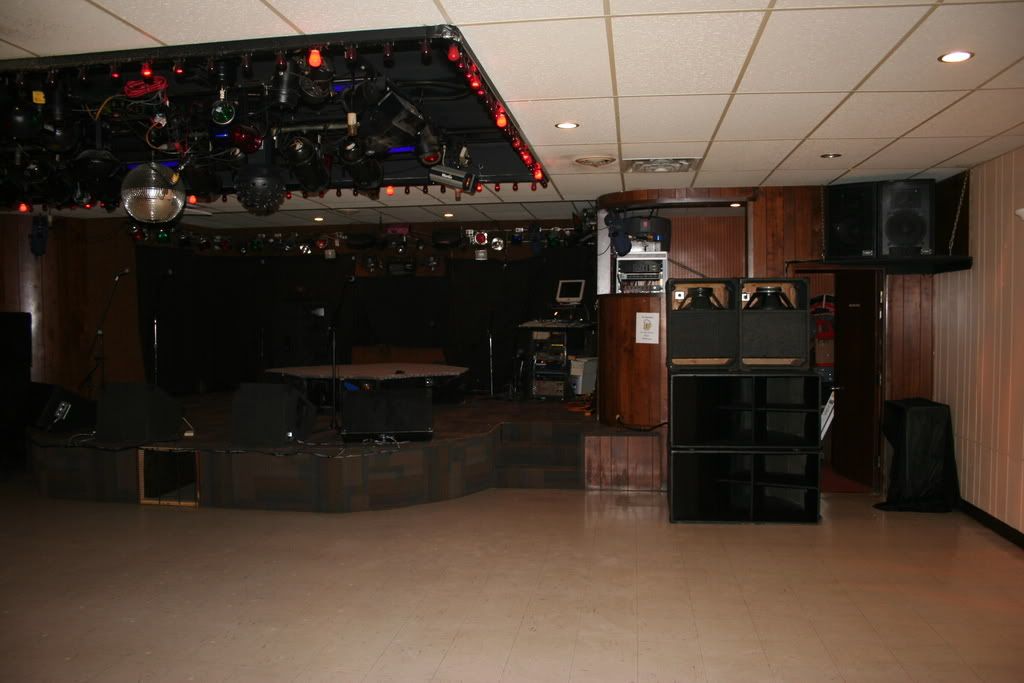Auto EQ how it's suposed to work...

Here I sit folks...trying to solve life's problems, and in this case, one cord at a time...unless your a fully vested Live Sound Professional you cannot fully understand just HOW many cables it takes to run live sound in any venue.. and in any room/situation...It's an ongoing task that see's me diligently working while the band is on break most evenings...Today however we are going to discuss Auto EQ...
Ok, I know I've spent a LOT of time po-po-ing the Auto eq in a room. The problem is, with so many variables, to tell everyone that they can walk into a room and press a button and VIOLA... Awesome sound! It doesn't happen... often. I have therefore tried to steer you good folks to a properly tuned and flat system. This will work well in most rooms. Remember that any excess energy that is present in a system in a lively room will detract from the sound, and in any room, once you have reached the point in a room where the space has Absorbed all it can, the more you pour in the less you will get out, that is the point of diminishing return.
You can also NOT EQ a room! it's impossible! The big boys on the ProSound Web say only a bulldozer can do that! You can EQ your speakers with respect to the room, but it's not the best way by any means. The below statements regarding Auto EQ assume that your system is properly set up, that the crossover is set properly, that all the speakers are working in unison, in phase, and that they are balanced properly form driver to driver. That means that when a positive pulse( speaker cone/diaphragm...moves outward, away from the magnet) is sent from the mixer, that an outward motion on all drivers is present. DON\"T assume that because the speakers are \"JBL\" or Mackie, or EV that they are properly set up. Much of what we get now is outsourced to offshore facilities and assembled by workers making substandard wages with little pride in their work, or incentive to have any. Mackie is the biggest culprit I have seen right now with sub standard product quality that was seldom seen in the past. JBL has also shown some really bad products with no recourse or way to get satisfaction... Cone drivers are easy to check with a 9 volt battery, where a plus to + and negative to - will result in an outward cone motion (note some JBL drivers are reverse wound and this would have an inward motion, but the other components should do the same). Some phase checking tools are available, and a web search should locate them. I have the Sheffield labs \"My disk\" with positive and negative pulses and a phase checker that indicates which direction the speakers are actually traveling... (Rane has a
THIS IS IMPORTANT FOLKS... for instance, If you have one sub on either side of the stage,(or even worse when they are side by side and there is no bass when you stand in between them)(assuming there is signal with bass signal sent, that is not being heard/felt...), and your standing in front of them.. and no matter how much you push them the low end is just gone..one (or more in a multi sub setup... maybe a whole side's...)of the subs is reverse polarized...Every time one of the subs moves toward you, the other(one one's) moves away, canceling the sound between them... now, all that is needed is to find the one that is not working with the rest of the system and reverse its polarity( the 260 on up allows software to switch the polarity and even phase as you get more and more control over the sound coming from your speakers.... Remember, there could be multiple culprits here! The more subs, mids and tweeters/horns that exist, the more that could be \"going the wrong way\"! The only way to be sure is to use some polarity checking device or method. Sometimes, after you have verified that all the cones that can be visually verified using the 9 volt battery method are moving in unison, all that remains is the horn, or tweeter, and simply isolating one top and switching the polarity of the tweeter will reveal a coalescing of the sound, or a blurred image when the hi frequencies are out of phase with the rest of the system.
I have had the pleasure of moving my installed system to a location where the room is exceptional.

***NOTE***that is the old system, moved in in JAN 08**** The bar continues on to the left (picture) for another 30 feet... and behind the PIX for another 15 feet...***
An exceptional room is one that has a higher ceiling, odd dimensions or the walls are not parallel and there isn't a bunch of reflective surfaces near the speakers. In this particular room I did an Auto EQ, predicated on the -0- or flat response curve, and other than a fully boosted 1khz.

( this wavelength calculated here http://www.mcsquared.com/wavelength.htm is 3.39 inches or 1/4 wavelength of 1000 hz which corresponds nicely to the Clamp used to suspended the mic from the ceiling that I pointed the mic at, in this case the metal grid, I\"m going to have to try it on the acoustic panels next, however I presume the same results would be delivered)

See the \"new indoor method\" picture and imagine the mic next to the ceiling instead of the floor. I went equidistant from the speakers in an equilateral triangle ( this was about 20 feet out from the speakers)with the system set up 4 subs on each side (similar to EV S181 manifold 18\") of the stage with 1 Yorkville Elite 2204 (dual 15\" with 2\" exit B&C 750 horn) on each side. I knew I would see a ton of cut in the sub region so I turned the sub amps down about 6 db and the Auto EQ left the 3 low bands alone ( it ignored them, the Auto EQ can ignore up to 4 bands I believe if it sees no response in those frequencies) A single pass and a transference of the GEQ settings to the PEQ's, returned the sub amps to previous setting, and a little critical listening and tweaking yielded stunning results, for that system that is. The cones on all the speakers could use replacing, and the diaphragms in the horns could as well, but all in all it sounds GREAT! All took less than an hour.
So it can be done! If your working with a decent room, and your system is tuned properly to begin with, the Auto EQ can provide acceptable results! Remember that all fully cut or boosted equate to cancellations, modes. and nulls. These results were not verified with SMAART or any other analyzer. My ears were the final judge in this case.
If your room is really funky and or reverberant, your results will probably be poor to unusable. Your ears need to be the Final judge.
Gadget
Here are the PIX from the NEW setup, REALLY awesome sound...



0